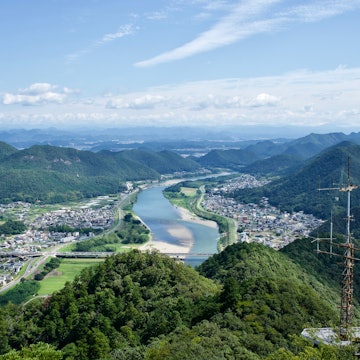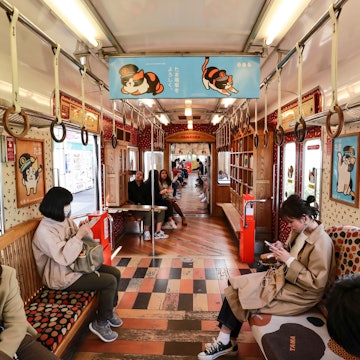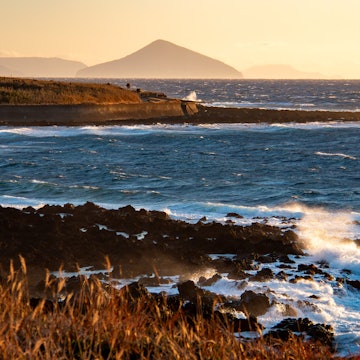

Osaka offers many charms. cowardlion/Shutterstock
This is renowned as Japan’s friendliest city, and one of its most delightful. If you want great food, buzzing Osaka nightlife and modern Japanese skyscraper metropolis, but at a manageable size, add a few days in Osaka to your trip.
Here's an Osaka travel guide offering everything you need to know if you're visiting for the first time.
When should I visit Osaka?
Short version: The best time to visit Osaka is in the spring or autumn, and even into the more off-season of winter.
Long version: Like much of Japan, Osaka has a humid subtropical climate with mild winters but hot and humid summers. June and July are the tsuyu, or rainy season, while September into early October brings tropical storms and sometimes typhoons. A lot of the fun of Osaka is strolling its outdoors entertainment districts, so wet weather isn’t ideal.
There’s a reason that beautiful spring blossoms and autumn leaves are the most popular seasons to visit Japan. They bring crowds, though, and while Osaka will be quieter than neighbor Kyoto, the cities do share airports and a Shinkansen line. So if your main interests are the city of Osaka itself and its nightlife, you may well find the quieter winter season a great time for your visit.
If you do pick summer, you’ll get to enjoy the city's festivals. Osaka’s main three are the first major summer festival Aizen Matsuri that takes place in late June to early July, Tenjin Matsuri in late July which is known for its spectacular fireworks, and Sumiyishi Matsuri in late July to early August. September brings the exciting Kishiwada Danjiri Matsuri south of the city, with its crashing wooden floats.
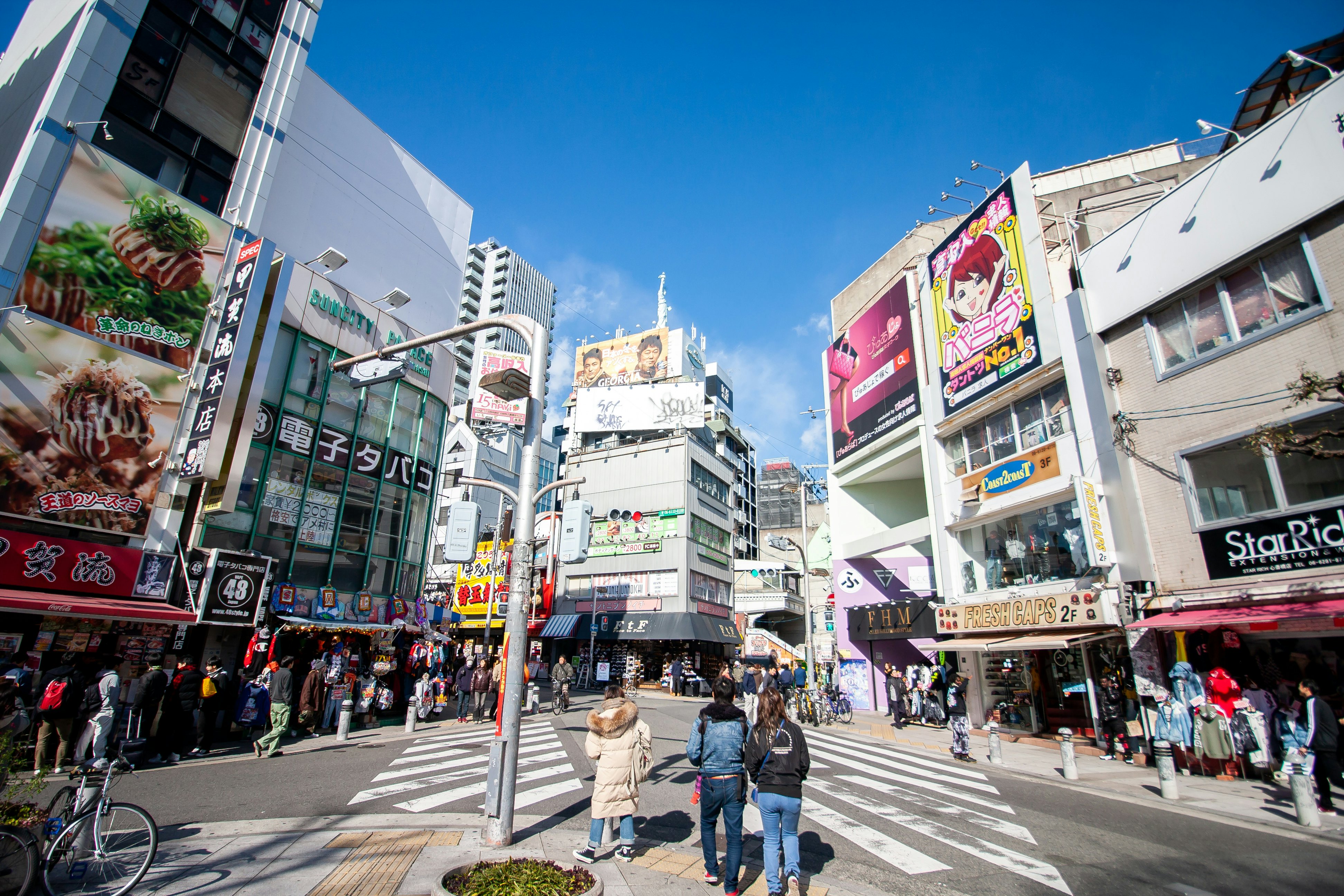
Should I fly into Osaka or Tokyo?
Osaka has a main international airport (the new one called Kansai, airport code KIX, on the artificial island in Osaka Bay) and an old one in the city now used for domestic flights (named Itami, code ITM).
Quite a few airlines offer international flights direct to Osaka Kansai, but traveling in Japan is so easy that it’s only a minor inconvenience to transfer — either via plane or Shinkansen bullet train — via Tokyo.
How do I get in to and around Osaka?
If you fly into Kansai Airport, you have multiple options. Take one of the two “limited express” trains depending on where you want to go in town: JR West’s Haruka or Nankai Railways’ future-retro designed rapi:t (pronounced rapiito). If neither is convenient, see if one of the KATE (Kansai Airport Transportation Enterprise) Airport Limousine buses work better.
From Itami Airport, take the Osaka Monorail and connect to local railways from there.
The Shinkansen arrives at Shin-Osaka station, north of the city center, which is served by many regional, local and metro services to get you into the heart of the city.
As far as Osaka transportation, Osaka is covered by a metro/subway network, local train lines that act a lot like a metro/subway, regional/commuter rail and even a monorail. Ride-hailing apps can be helpful, as few taxi drivers speak English (though you can always show an address on your phone). They, like taxis, remain pretty expensive, especially compared with the excellent public transportation.
Your phone’s maps app is probably the best way to find your way around town, with both Apple and Google’s products well integrated with local transit. Keep an eye out for inclement weather, especially seasonal typhoons in early autumn, though: the network can and will shut down early before a major storm rolls in.
Rail and transit passes exist, but most people are better off using a stored-value IC smart card like the local ICOCA to tap in and tap out of the metro and local railway stations.
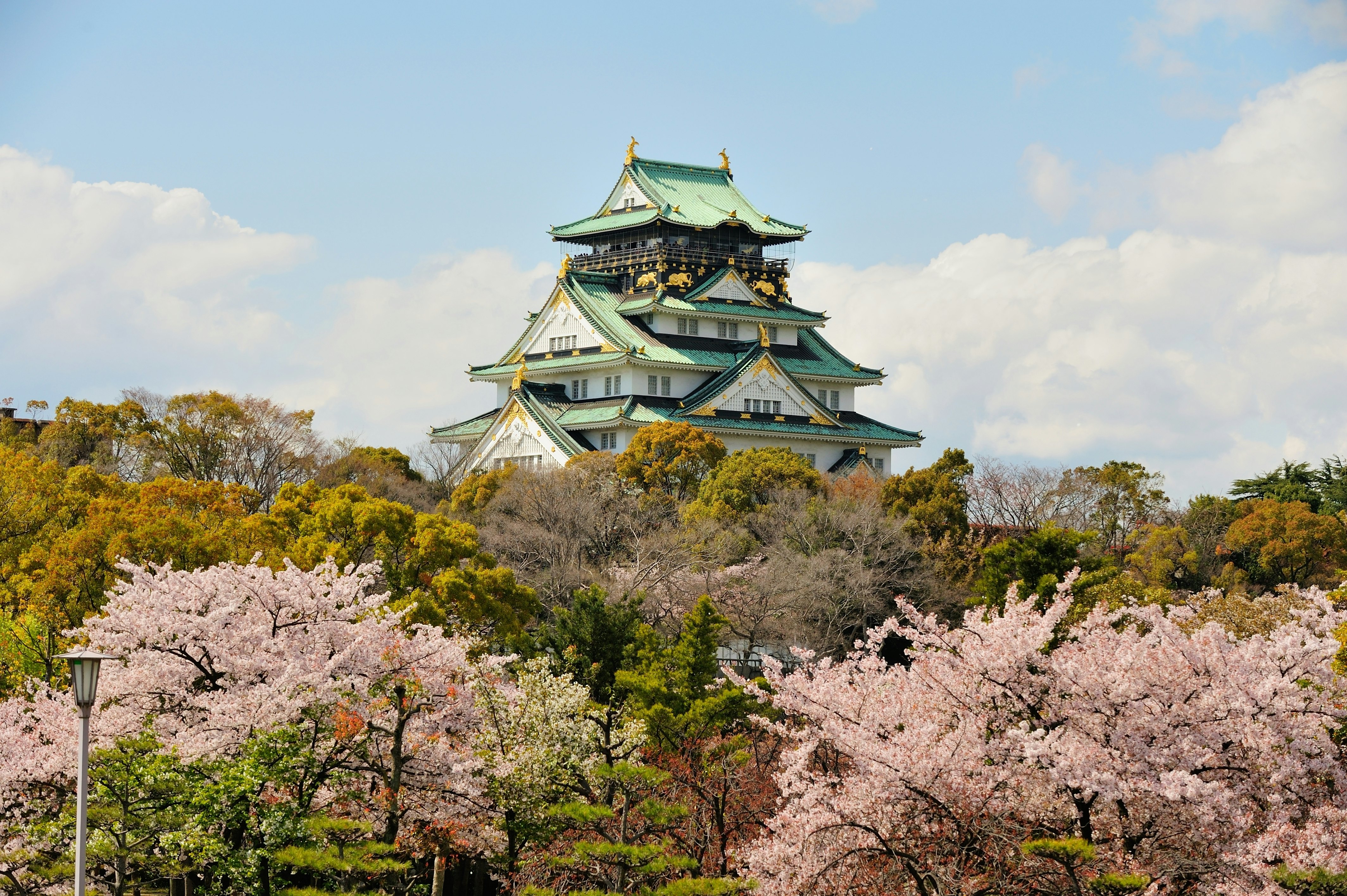
Must-see places on your first Osaka trip
Osaka is one of those cities that transforms between day and night, with some top Osaka sightseeing things to do in the daytime and the full Japanese electric metropolis experience at night.
At your most energetic, hit up Dōtombori, a street parallel to the canal of the same name, near Namba station. It’s both a street food hub and one of Japan’s most incredible neon wonderlands, so the perfect time to start is an hour or two before sunset. Walk, wander, snack, poke your head into video game arcades… it’s busy, touristy, but a real trip!
For fewer tourists but almost as much local food choice, use your phone to find a nearby department store and head for the basement, where there will almost always be a food hall crammed full of small stalls, sometimes with independent and local vendors, selling delicious morsels to take away.
Amerika-mura (literally "America Village") is to Osaka what Harajuku is to Tokyo: a funky district that’s being gentrified from “where all the cool kids hang out” to being the neighborhood a block from the big Apple Store. It’s a fascinating place and well worth a visit. Aim for Triangle Park and wander either towards or away from the global brand avenue of Midō-suji, as you prefer.
Osaka Castle was destroyed many times throughout history, and the main tower keep today is a concrete reconstruction that contains an excellent museum. That doesn’t make it — and its extensive park-like garden grounds, which are surprisingly lovely at night — any less beautiful in pictures, though. The enormous moats and walls are hugely impressive too, while the cherry blossoms are glorious in spring.
The nearby Osaka Museum of History is great for buffs and handy for a rainy or humid day, and also offers great views of the castle and gardens with modern Osaka in the background.
Speaking of views, skip the pricey skyline observation decks for a drink at one of the rooftop bars, where drinks can be cheaper than the observation decks would be! I love the high ceilings and windowed walls of the Ritz-Carlton’s panoramic bar (and its martini menu), while the Sky Lounge Stardust in the must-visit Umeda Sky Building is also super, with a range of attractive cocktails (and mocktails) that won’t break the bank yet match the great view. Again, these are perfect for sunsets.
Osaka is also home to Universal Studios Japan and a Legoland Discovery Center, while there’s a more local flavor to Hirakata Park, Osaka’s oldest amusement park.
Love cats? Hop on the train for an hour-and-a-half south along the bay to nearby Wakayama, where you’ll change to the Wakayama Electric Railway for a cat-themed train to Kishi Station, literally shaped like a cat and also home to the world-famous stationmaster cat Tama (now succeeded by Nitama). Check the website for the hours when the cats are at work, and make sure when planning the trip that you’re definitely on the way to Kishi Station in Wakayama Prefecture, not the Kishi Station in Osaka Prefecture!

What food should I try?
Local food is a huge part of Osaka’s appeal. Here are some of the dishes to try across the city:
Takoyaki: an octopus dumpling ball snack, served volcanically hot inside – watch out!
Okonomiyaki: the infinitely customizable and very filling cabbage pancake-fritter — try the Kansai version (more cabbage-based) here and the Hiroshima version (more noodle-filled) there.
Kushikatsu: the ultimate street food of battered skewers of meat and vegetables.
Kitsune udon: the local udon noodle specialty with its seasoned tofu top (said to be a favorite snack of foxes, kitsune, hence the name).
Is it expensive? How much cash do I need?
You can find cheap, scrupulously clean and intensely Japanese “business hotels” like Toyoko Inn for around $50 a night, with midrange international brands perhaps double that.
Getting around the city is really inexpensive ($1–2 per trip), while munching your way around foodie Osaka is almost unbelievably cheap — you’ll get a plate of steaming takoyaki for under $5, lunch sets for under $10 or a filling okonomiyaki dinner for well under $15.
Cash is still the favorite way to pay in Japan, but this is less true in Osaka than in more rural areas. While credit cards are widely accepted in hotels and restaurants, stored-value IC cards (see “getting around” above) are also very useful — though usually charged up with cash rather than via credit cards. You’ll want cash for taxis and street food at the very least, and most Japanese people carry a fair amount with them, especially in coins. Not all ATMs take international cards, though those found in post offices and most convenience stores will.
How much time do you need in Osaka?
Plan a good few days to enjoy everything Osaka has to offer, day or night, with a couple more for exploring elsewhere within the region or as rest days — more time to munch your way through the city.
Should I base myself in Osaka to visit western Japan?
If you want to unpack your suitcase just once and then use the speedy Shinkansen to visit multiple destinations in western Japan, you have a lot of better options as a base than Osaka, such as Hiroshima; Himeji and its beautiful castle; Okayama and its famous gardens, castle and legendary local mascot of “peach boy” Momotarō; the island of Shikoku; and the Seto Inland Sea. You’ll find better value hotels that are closer to the station in cities west of Osaka itself.
Of these, Okayama is a particularly good base. It's on the Shinkansen line and the slower rail “crossroads” between Shikoku and the northern sea of Japan side of the Chugoku region, and it is a charming, convenient and cheap option. It's also the farthest west you can get from Tokyo on the Hikari Shinkansen, which is the fastest you can take with the Japan Rail Pass.








